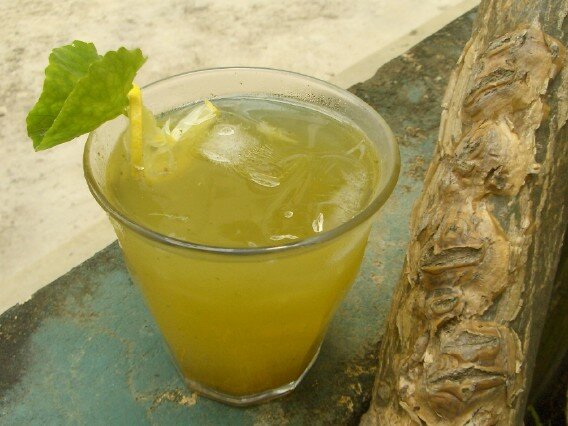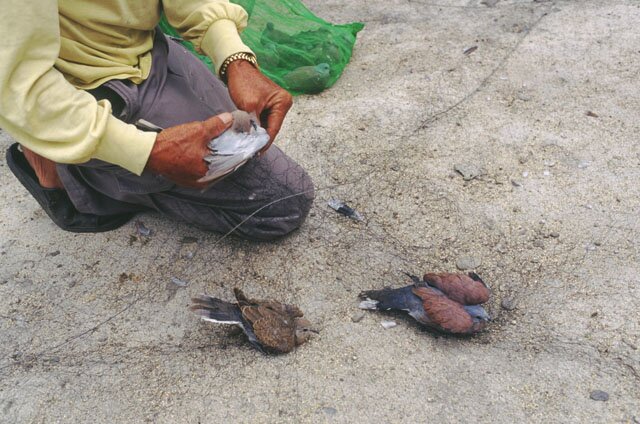BROWSE COUNTRIES/ TERRITORIES
SPAM, I am
While Melanie Hilario keeps her Spam consumption a secret, she embraces other Spam-eaters as culinary siblings.

It was the first time I’d bought it in ages, one night while stretching yet another dollar in graduate school. Blaring SPAM in bright yellow letters, the can moved slowly along the grocery conveyor belt, and before I knew it, I blurted out, “Yes, I eat it!” My Spam shame, only partly in jest, was actually more apparent than the Spam. The woman at the checkout counter pooh-poohed my confession, smiled warmly, and confessed, “Oh, we ate it, too. My mum made Spam tacos.” I sighed with relief, the week’s budget and my ego in tact.
The truth is, my family ate Spam every weekend for breakfast: mornings greeted by the sizzle and smell of it frying next to eggs and garlic rice on the stove. Although my parents did feed us homemade dishes from their native Philippines, there lay a dark side to our kitchen, a storehouse of the wickedly instant: Eggo waffles, Pop-Tarts, fish sticks, corned beef, Vienna sausages.
And, of course, Spam.
Looking back, it’s a wonder my brother and I are even alive.
But Spam’s cheap tasty meals did help keep us alive. Steamed rice in constant supply, hunger was easily quelled when Spam was around. We didn’t make tacos—our spam-du-jour was strictly purist: thin slices, slightly charred at the edges. Wham, bam, add some frozen peas, the dishes get done; homework gets done; the pocketbook isn’t broken. Spam was part of a sensibility. Spam was about making it. Spam was survival in a can: a delectable salty meat that helped the struggling feel like they weren’t.
Enticed by its low cost and little need for seasoning (Spam is short for SPiced hAM, after all) my mother frequently bought it by the case, keeping army-sized provisions in our pantry. “It was on sale,” she’d say insistently, stacking cans in a cabinet high above the fridge, as if to explain what no good mother would possibly use to sustain her family were it not for financial strife. “Only $1.79 each! So cheap!” Back then, that was a lot of sodium for your buck; plus, it kept without being chilled, and didn’t really even need to be cooked. Why not keep 200 or so cans on-hand, for you know…emergencies?
Introduced by Hormel in 1937, Spam proved bulk-buying mums had the right idea; with protein otherwise scarce, Spam literally could and did feed armies, turning into a military staple. Soldiers spread the quick sustenance far and wide, which is likely how Spam travelled and flourished in places like the Philippines, Korea, and Japan. “It’s a common ingredient in kimchi jigae. My mother said they lived off the stuff during the (Korean) war,” says Christine, adding that it may have even been parachuted from airplanes; I envisioned pallets of it floating to the Earth like angels. Spam’s ease and convenience made it a standard World War II ration. “My father ate so much of it in the army, he wouldn’t eat another bite,” says Susan, who is Japanese but has never eaten Spam. “I feel deprived! The only spam I get is in my e-mail inbox.”
Largely Asian-populated Hawaii is a huge Spam-fan; with four million cans purchased a year, it’s the home of Spam musubi, a sushi-like snack with the meat fried and wrapped up in rice and seaweed. My friend Rose is Chinese and grew up in Honolulu; she poetically describes other ways she enjoyed Spam: “Spam was breakfast with my father. It was lunch fried and squished between toast and a sunny-side up egg dripping its golden yolk onto my palm.” Like Rose, I’ve felt that same wistfulness. It was what we ate, thus part of our growing up, a circumstance that became symbolic of identity. Says Rose, “[Spam was] a simpler life that accepted its place that was not the mainland…the life I left behind when I moved to San Francisco and wanted to fit in....”
In the US, the Spams and Spam-nots emerge via economics, which often, but not always, overlaps race. My Caucasian and Texas-raised aunt, initially surprised that she and my Filipino uncle both grew up on Spam, recognized their diets were partly defined by their working class parents’ incomes. Like potatoes or beans and rice, Spam can feed more people with less money, whether those people are poor or immigrants or both. When asked if she ate Spam growing up, my friend Dawn took a long pause before answering, “Yes,” in a secretive mumble, then revealed her mother made Spam sandwiches for picnics. Eschewing its lowbrow connotations, my godmother Mary Jane asserts, “I like Spam. I am not embarrassed to tell people I was raised on Spam.”

A Philippine émigré at the age of five, she too remembers Spam sandwiches packed for school lunch by her mother. (Low maintenance was another facet of Spam’s charm: shaped like a loaf, it practically puts itself on sliced bread!) Spam may not exactly be food for the gods, but anyone pressed for money and time did well to keep a can next to the peanut butter.
Now having raised a generation or two, Spam bonds those who share a taste for it. “Spam?? Oh my god!” yelled my friend Martha, who—true to Spam’s background—rallied a makeshift rations line in her college dormitory. “The other Asian girls and I set up a hot plate in the hallway and cooked it for each other.” I realized that almost everyone I knew who loved Spam as I did was Asian, and while we essentially kept our Spam consumption to ourselves, we embraced other Spam-eaters as culinary siblings.
So it was in Manila, where great fanfare met the opening of Spamjam, a franchise where Hormel’s famous luncheon meat stands alone in the menu’s spotlight: Spam hero sandwich, Spam club sandwich, Spam potato chowder, bean soup with Spam, Spam Caesar salad, Spam poppers, Spam nuggets, Spam cutlet with fries, Spam dogs, and of course, the breakfast special of Eggs and Spam. “The restaurant looked like a blue and white McDonalds,” recalled Meeta. “My husband and his friends loved, loved, loved it! I'm convinced more of it had to do with nostalgia and the excitement of their childhood favourite represented in international pop culture. I recall the nuggets tasting like chicken….”
Alas, Spam is not chicken and Spamjam not McDonalds, and arguably would not have the same adoration in mainstream America that it does in Manila, regardless of how the Spam is cooked. I supposed I’m just sentimental: when I taste Spam, I taste more than pork shoulder and salt—I taste my childhood. Where adult life can be filled with pretension and complication, Spam embraces humility and simplicity, shouting: Spam, I am! And I taste good.
The wonder of Spam is what was done with it: signature dishes like musubi, kimchi jjigae, even Spam spaghetti. Where in life some get lemons and make lemonade, others get Spam and make Spamburgers. It’s the epitome of necessity turned invention. Meals fashioned from a square of pork, a bit of creativity, and the will to make the best with the flavour life gives you.
That may be, in the end, what really nourished us.
Photos from Melanie Hilario
Login or Register

- Asian Dynasties and History
- Conservation of the Environment
- Definition: Culture
- Economy and Economics
- Food and Recipe
- Geopolitics and Strategic Relations
- Health and Body
- Of Government and Politics
- Religion and Practices
- Social Injustices and Poverty Report
- Society, Class and Division
- Unrest, Conflicts and Wars
































 Another Point
Another Point From Jerusalem to the West Bank
From Jerusalem to the West Bank
Comments
Post new comment